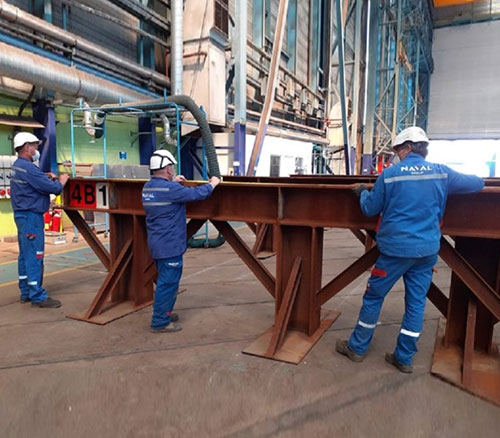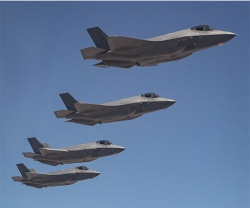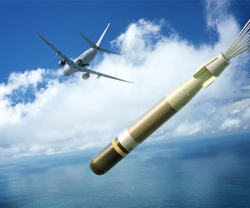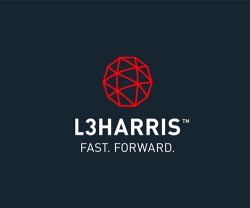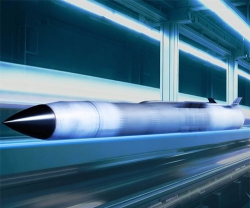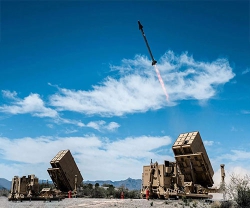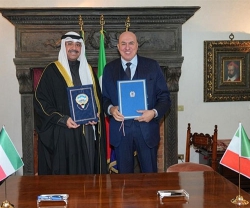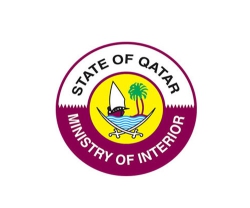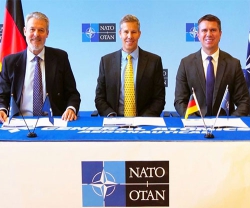Since the beginning of COVID-19, Naval Group has adapted its work organization to ensure the safety of all employees while remaining at the service of its customers’ needs. A health reference system has been drawn up and is regularly updated to adapt the protective measures to each work situation.
Pierre Éric Pommellet declared: “In coordination with our physicians, health and safety teams and social partners, we have been able to ensure the ramp up of our activities at all our production sites. Today, we are about to regain our pre-crisis pace of activity – with a work organization that differs nonetheless very much from the one we used to know. First of all, teleworking has proven its effectiveness and we are maintaining it for all those who can work remotely. For employees on our sites, all health measures have been implemented.”
“Despite the slow-down of our industrial activities, we have been able to reach several key milestones and we are doing our best to meet our engagements. This is made possible thanks to our company’s management, to the quality of the dialogue with the unions and thanks to the engagement of all employees and partners that I warmly thank for their commitment to the group and its clients,” he added.
In addition to teleworking which is already widely deployed, Naval Group has taken for each of its sites the necessary health and safety measures to enable the gradual and controlled resumption of its industrial activities. These measures have been put in place as part of a sustained dialogue with unions, drawing on the expertise of the Health, Safety and Environment teams as well as health and medical services.
For the employees of Naval Group’s international subsidiaries, specific measures have been adopted in accordance with the instructions of the local authorities and the group’s guidelines. Today, more than 10,000 employees have returned to their workstation, i.e. more than two thirds of the group’s workforce. Nonetheless, much remains to be done in order to regain pre-crisis productivity levels.
Since February, a group and local crisis management units were set up on each site to monitor developments in the health situation in France and around the world. Even though activity was reduced – with an overall presence of 10% of employees at the beginning of the crisis – this slowdown was compensated with a high number of employees working from home (a third of the overall workforce at the highest).
This continuity of activity has enabled Naval Group to provide continuous support to the navies in their essential missions in the service of defense, in particular with regards to maintaining the French deterrence posture or to contributing to the French Navy’s operations as well as to that of other international clients.
The Île Longue shipyard in Brest, a symbol of Naval Group’s priority missions, has been at the heart of the group’s business continuity plan. Several hundred people continued to work on the site every day to ensure the maintenance and modernization of the nuclear-powered ballistic-missile submarines (SSBN).
Naval Group teams also contributed to the Résilience Operation. At the end of March, Naval Group provided technical and logistical assistance to the French Navy for the Landing Helicopter Dock (LHD) Dixmude who was able to sail to the West Indies to help the population against the Covid-19 pandemic. On March 23rd, thanks to the shore-based support of Naval Group teams, the LHD Tonnerre urgently evacuated Covid-19 patients from Corsica.
The Australian Future Submarine Program passed the intermediate design review at the very beginning of April, a key milestone in Naval Group’s roadmap to the System Functional Review (SFR) in early 2021 that was celebrated during an exchange between the two Defense Ministers.
Furthermore, the Suffren nuclear attack submarine began sea trials on April 28th. It will be delivered later this year as planned. The third Egyptian Gowind® corvette, produced thanks to a technology transfer, left the Alexandria workshops to be launched on May 15th.
Employees working on site and remotely also made it possible to continue working on the last two multi-mission frigates (FREMM) of the program. The first sea trial of the Alsace and the launching of the Lorraine are scheduled for this autumn.
Work continued on the design and development of future strategic vessels or equipment such as the defense and intervention frigates (FDI), the 3rd generation nuclear-powered ballistic missile submarines and the studies for the aircraft carrier replacement project. In Brazil, the Scorpène® submarine program, involving technology transfer, is also moving forward.

